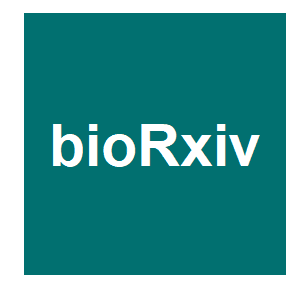
Keywords: X chromosome

|
Hoisted with his own petard: How sex-ratio meiotic drive in Drosophila affinis creates resistance alleles that limit its spreadW. J. Ma, E. M. Knoles, K. B. Patch, M. M. Shoaib and R. L. Unckless, J Evol Biol, 2022.
Meiotic drivers are selfish genetic elements that tinker with gametogenesis to bias their own transmission into the next generation of offspring. Such tinkering can have significant consequences on gametogenesis and end up hampering the spread of the driver. In Drosophila ... Keywords: driving X, drosophila, gamete-killing, Gene drive, gene drvie natural, genetic conflict, genomic conflict, meiotic drive, segregation distortion, selfish genetic elements, sex-ratio, X chromosome |

|
Hoisted with his own petard: how sex-ratio meiotic drive in <em>Drosophila affinis</em> creates resistance alleles that limit its spreadW.-J. Ma, E. M. Knoles, K. B. Patch, M. M. Shoaib and R. L. Unckless, bioRxiv, 2022.02.14.480432. 2022.
Meiotic drivers are selfish genetic elements that tinker with gametogenesis to bias their own transmission into the next generation of offspring. Such tinkering can have significant consequences on gametogenesis and end up hampering the spread of the driver. In Drosophila ... Keywords: driving X, drosophila, gamete-killing, Gene drive, gene drvie natural, genetic conflict, genomic conflict, meiotic drive, segregation distortion, selfish genetic elements, sex-ratio, X chromosome |

|
Red queen’s race: rapid evolutionary dynamics of an expanding family of meiotic drive factors and their hpRNA suppressorsJ. Vedanayagam, C.-J. Lin and E. C. Lai, bioRxiv, 2021.08.05.454923. 2021.
Meiotic drivers are a class of selfish genetic elements that are widespread across eukaryotes. Their activities are often detrimental to organismal fitness and thus trigger drive suppression to ensure fair segregation during meiosis. Accordingly, their existence is frequently ... Keywords: driving X, drosophila, gamete-killing, Gene drive, gene drvie natural, genetic conflict, genomic conflict, meiotic drive, segregation distortion, selfish genetic elements, sex-ratio, X chromosome |

|
Selfish genetic elements and male fertilityR. L. Verspoor, T. A. R. Price and N. Wedell, Philosophical Transactions of the Royal Society B-Biological Sciences, 375:7. 2020.
Selfish genetic elements (SGEs) are diverse and near ubiquitous in Eukaryotes and can be potent drivers of evolution. Here, we discuss SGEs that specifically act on sperm to gain a transmission advantage to the next generation. The diverse SGEs that affect sperm often impose ... Keywords: driving X, drosophila, gamete-killing, Gene drive, gene drvie natural, genetic conflict, genomic conflict, meiotic drive, segregation distortion, selfish genetic elements, sex-ratio, X chromosome |

|
Autosomal suppression and fitness costs of an old driving X chromosome in Drosophila testaceaG. Keais, S. Lu and S. Perlman, Journal of Evolutionary Biology, 2020.
Driving X chromosomes (XDs) are meiotic drivers that bias their own transmission through males by killing Y-bearing gametes. These chromosomes can in theory spread rapidly in populations and cause extinction, but many are found as balanced polymorphisms or as ?cryptic? XDs shut ... Keywords: driving X, drosophila, gamete-killing, Gene drive, gene drvie natural, genetic conflict, genomic conflict, meiotic drive, segregation distortion, selfish genetic elements, sex-ratio, X chromosome |

Contact
David O’Brochta
Foundation for the
National Institutes of Health
geneconvenevi@fnih.org
RSS

